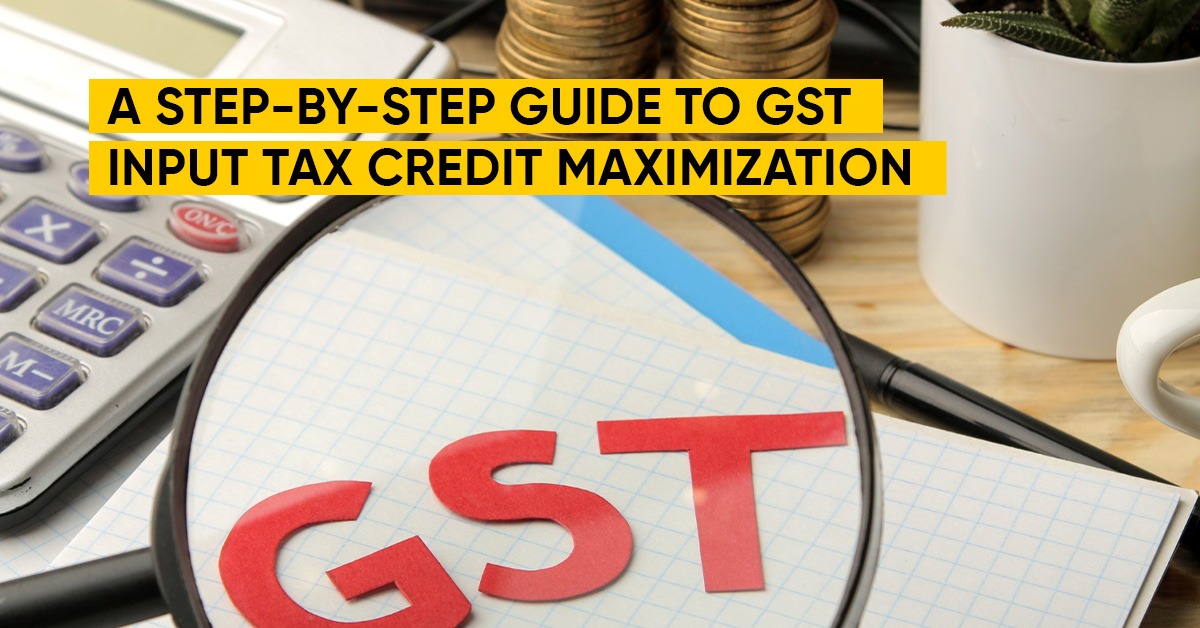
I have a question to ask you–how many times do you feel that taxes are biting into profits of your business? To the majority of entrepreneurs and professionals I talk with, the answer is too often.
This is where the GST Input Tax Credit (ITC) will come in. It is also one of the most effective things for businesses to use under GST and there are still many who fail to use it to its full potential. Indeed, it has been found that over 40 percent of ITC claims in India are rejected due to mismatches, errors, or ineligibility based on CBIC data.
This guide will take you through step by step how to maximize your ITC, how to understand input tax credit under GST, ITC filing tips, and how to achieve huge tax savings for businesses through proper GST returns and GST return filing. You will end up seeing how you can claim what is rightfully yours for free of stress.
👉 “Know How a Project Report Secures Your Bank Loan Approval“
What is GST Input Tax Credit?
Consider GST input tax credit as a method of avoiding paying tax twice. As a manufacturer, retailer or service provider, you pay GST on your purchases (inputs) and you also collect GST on your sales (outputs). Also, ITC enables you to deduct the tax you have paid on inputs against the amount you are required to pay on outputs.
Example
Say you buy raw materials worth ₹5,00,000 and pay ₹90,000 GST (18%). You then sell finished goods worth ₹10,00,000 and charge ₹1,80,000 GST. Instead of paying the full ₹1,80,000, you use ITC to claim the ₹90,000 you’ve already paid, leaving only ₹90,000 payable.
That’s the reality of ITC—it keeps money in your business instead of locking it up in tax.
Also you can read: What are the documents required for a GST registration?
What does Input Tax Credit Under GST really mean?
So what is input tax credit under GST?
iInput tax credit under GST may be a technical phrase but it is not difficult. It implies that you are able to claim the GST that you have already paid on the goods and services which you have utilized in business.
Now this is what you must know:
- ITC can only be availed when your supplier has submitted their GST returns.
- You should possess good tax invoices.
- ITC is not claimable for personal expenses or free samples or in restricted items such as motor vehicles.
👉 Reality check: A large portion of ITC rejections happens because suppliers don’t file their returns on time. That’s why it’s not just about your compliance—it’s also about your vendor’s compliance.
Who can claim ITC and under what conditions?
ITC is not a right of every business You must check the following conditions:
- You are registered with GST.
- You have already got the goods/services.
- Your supplier has made adequate GST returns.
- You possess a legal tax invoice.
In FY 2022, the ITC claims worth more than 40,000 crores were blocked due to the failure of business to meet these conditions. That is a massive amount- and it indicates why compliance cannot be overlooked.
How do you maximize ITC step by step?
Following is a roadmap that you can follow:
Step 1: Invoice match on a regular basis
Your invoices that you purchase should always be in line with the supplier information on the GST portal. One of the largest causes of ITC rejection is mismatches.
Step 2: Supplier compliance
Failure to file GST returns by your supplier means you will not be entitled to claim ITC. Do business with only compliant vendors.
Step 3: Make correct GST Return Filing
Be particularly cautious when doing GSTR-3B and GSTR-2A reconciliation. Little mistakes in this case lead to huge losses
Step 4: Employ technology
Manual tracking is tense. The companies that employ digital reconciliation software have minimized the mismatch by as much as 25%.
📊 Did you know? More than 40% of ITC claims are rejected because of GSTR-2A and GSTR-3B mismatches.
What are some practical ITC Filing Tips?
The following are a number of things that work in practice:
- Reconcile invoices on a monthly basis, not just the end of the year.
- Automate- do not use manual spreadsheets.
- Maintain all invoices and receipts of payment in case of audits.
- Make sure that vendors file on time.
These little steps ensure that you do not end up losing big and also help develop trust with the banks and the tax authorities.
How does ITC create Tax Savings For Businesses?
Claiming ITC correctly, increases your working capital directly. Imagine this:
In the case of a small business with a turnover of 2 crores, one can save 10-15 lakhs per year by proper utilization of ITC. That is an amount that can be ploughed back into your business rather than be paid as additional tax.
Real-world example
A retail business in Kerala was losing about 8 lakhs annually on account of mismatched ITC. After they stiffened up on compliance and automated filing, they were able to increase profit margins by 9 percent. That is how much tax savings for businesses may be achieved through ITC.
What does the future of ITC look like in India?
The big ones I have seen many businesses make are:
- Not issuing invoices
- Claiming ITC in items that are not eligible.
- Late filing of GST Returns
- Misunderstanding of regulations under the Input Tax Credit under GST
📊 According to a PwC India survey, 33% of SMEs lose ITC benefits simply due to lack of awareness. Don’t let your business be one of them.
What does the future of ITC look like in India?
We are on the road to a completely digital GST compliance future. This is what you are going to get:
- ITC reconciliation using AI.
- Invoice matching in real time.
- Faster, automated GST return filing with on the fly validations.
The companies that will adjust to it today will have an easier time complying and remain ahead of those companies that are still using manual processes.
You can also read: Want to know about why you need a GST invoice?
Conclusion
And the one thing you should remember after reading this guide: maximising GST input tax credit is not only about paying less tax it is about having more money in your business to drive growth.
Learning input tax credit under GST, and completing accurate GST returns, use of smart ITC filing tips, and timely GST return filing are the few steps that can help in achieving greater tax saving for businesses.
However, the reality is that all this is tiresome when it is done manually. Mistakes, tardiness, and rejections all cost you time and money.
That is where Finline can help. Finline enables you to create the correct, bank-ready project reports and make compliance easy in less than 10 minutes. No pressure, no back and forth- just more efficient, quicker, and more dependable outcomes. The best part? All banks will accept their project reports as per your funding needs.
👉 Don’t let ITC slip through your fingers. With Finline, your reports and compliance are always on point—helping you secure faster approvals and focus on what really matters: growing your business. 🚀
Create your bank-approved project report with Finline today!





